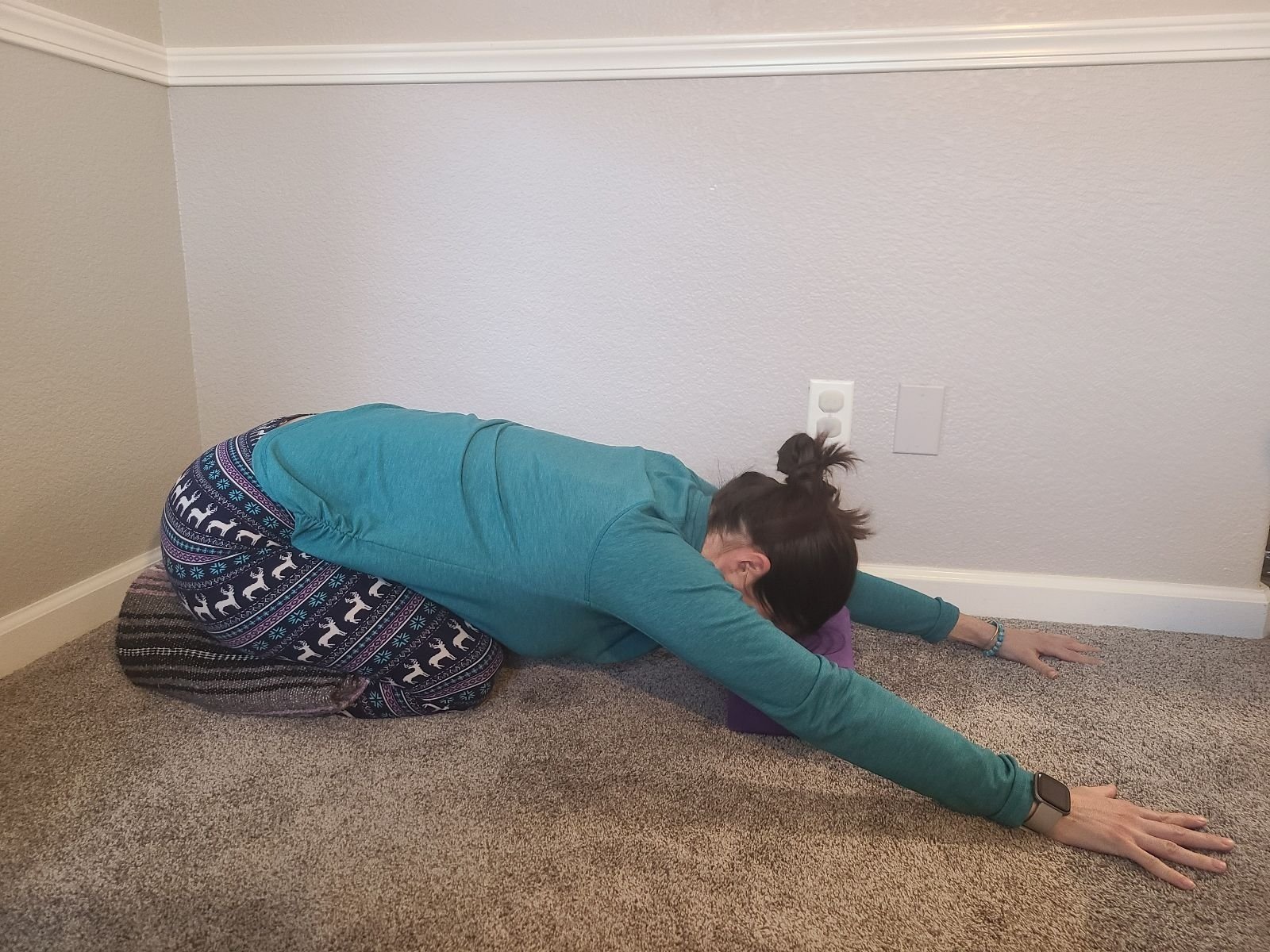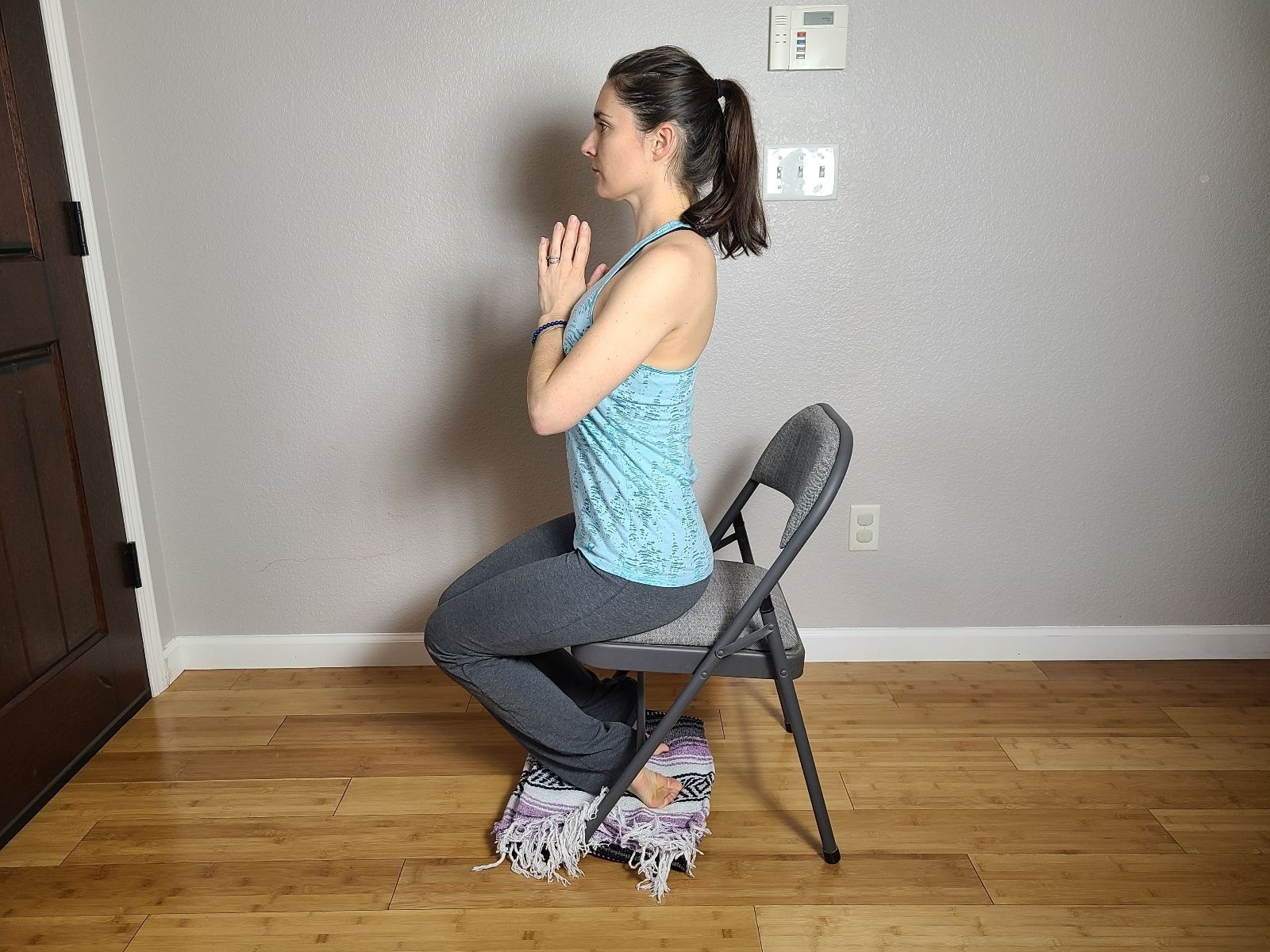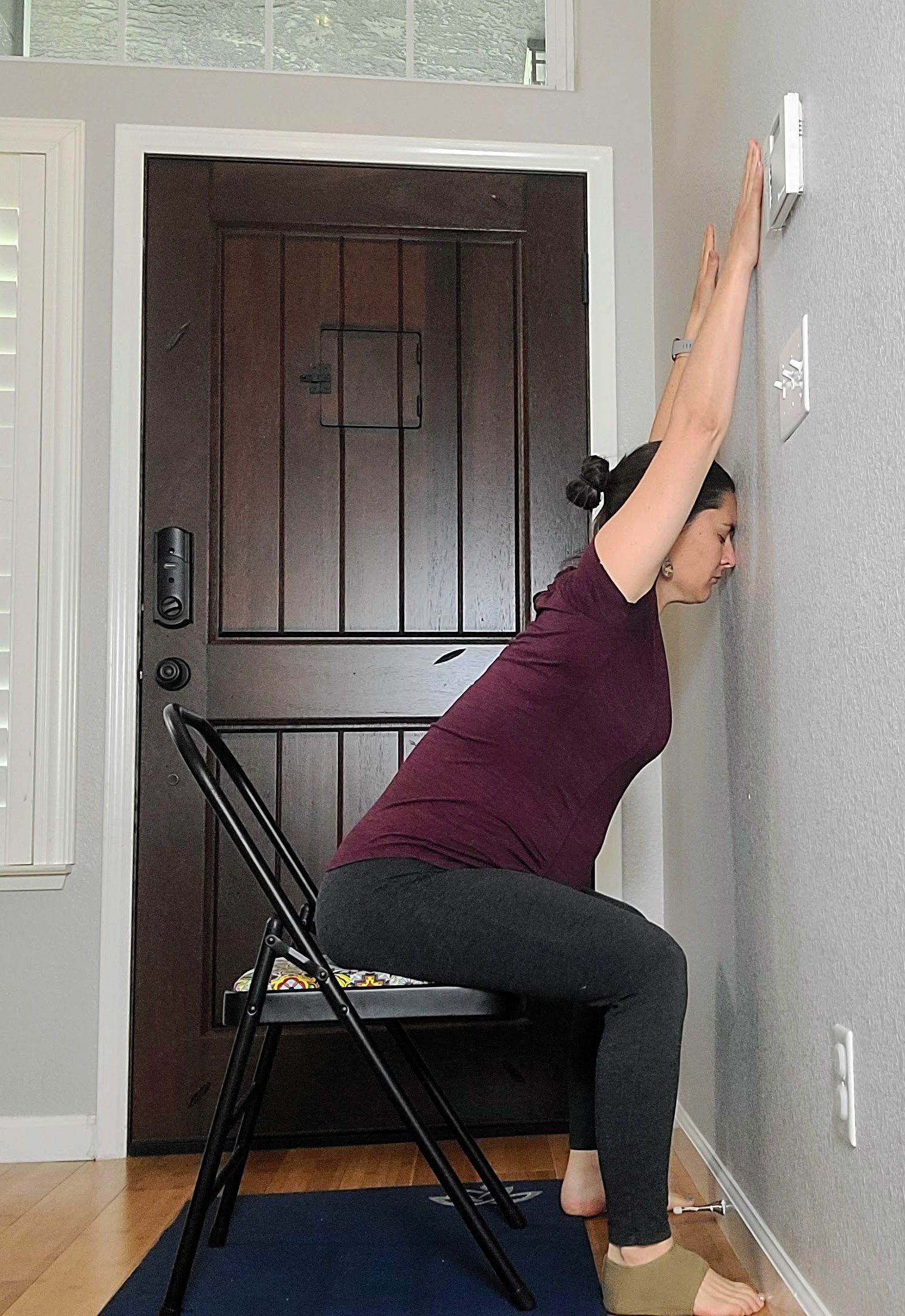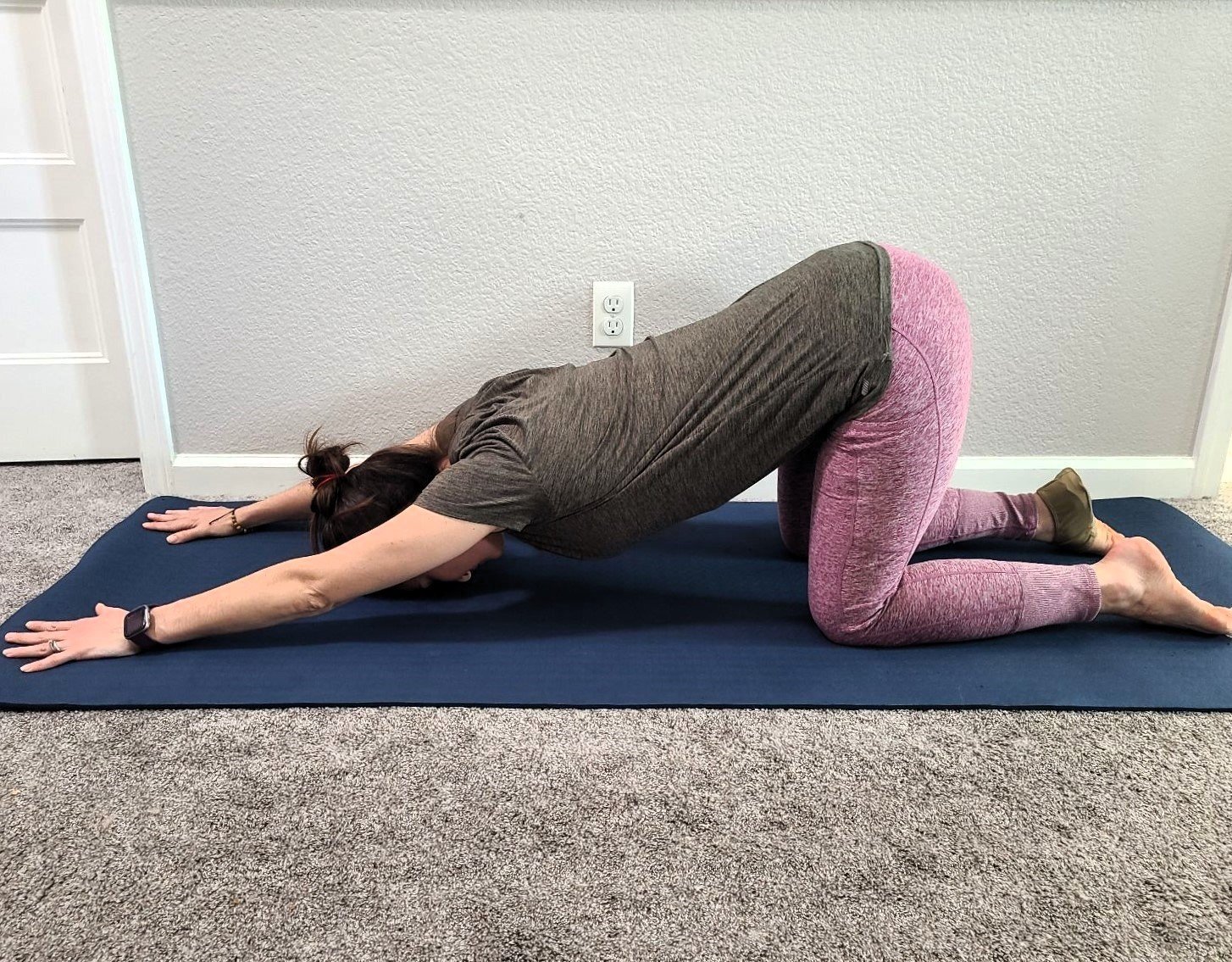Accessible Options for Those Who Can’t Sit on Their Heels in Child’s Pose (Balasana)
/Yoga offers many benefits for the body and mind. However, some poses can feel uncomfortable or are inaccessible. For people with tight hips, ankles, or knees, one common yoga pose that can be tricky is Child's Pose (Balasana), where you sit back on your heels with your torso resting between or over your thighs. (Want to know how to do it? See my post on how and why to do Child’s Pose.)
Why Sitting Back on Heels Can Be Difficult
Tight Hips: Hips that lack flexibility can make it difficult to fold your torso forward and rest comfortably on your heels.
Tight Hamstrings: Hamstring tightness can pull your pelvis posteriorly, making it difficult to sit back and straining the lower back.
Ankle Issues: Conditions like plantar fasciitis or limited ankle mobility can make sitting back on your heels painful.
Knee Replacements or Injuries: A knee replacement or injury can limit your knee’s bending ability and create discomfort when sitting back on your heels.
If you have difficulty sitting back on your heels in Child’s Pose, here are some alternatives to try.
Accessible Alternatives:
Child's Pose with Props: Place a folded blanket, bolster, or block between your glutes and your heels. This elevates your pelvis, reduces the stretch on your ankles, knees, and hips, and better supports your joints.
Hero Pose (Virasana) with Support: Bring your knees together and your feet a little wider than hip distance apart. With the tops of your feet pressing down on the mat, sit back between your feet and lengthen the crown of your head up toward the ceiling. If this is uncomfortable on your knees, place a block, bolster, or blankets between your feet to sit up higher. You can also try this pose while sitting on a chair or bench by bringing the tops of your feet down into the ground under you.
Seated Forward Fold: Sit on a chair with your feet flat on the floor. Hinge at your hips and fold forward, lengthening your spine. You can rest your hands on your thighs or shins, the floor, or a prop like a block, a chair, or the wall.
Puppy Pose (Anahatasana/Uttana Shishosana): In this pose, like Child’s Pose, you are extending the upper body and hinging at the hips; however, here you reduce the amount of body weight on your ankles and hips and the angle of plantarflexion in the ankles and flexion in the knees. From a hands and knees position walk your hands forward and begin to lower your forehead toward the mat. Keep your hips over your knees.
Remember:
Listen to your body. If a modification feels uncomfortable or painful, come out of the pose or adjust it further.
Experiment and find what works for you. It may take a couple variations and props but keep exploring what your body can do.
Focus on your breath. Yoga is a practice that combines movement and breath. When a pose feels challenging, focus on your breath to stay present and grounded.
By incorporating any of these alternatives, you can continue to enjoy the benefits of yoga poses that might otherwise feel inaccessible. Embrace the modifications, and remember, yoga is a journey, not a destination.






